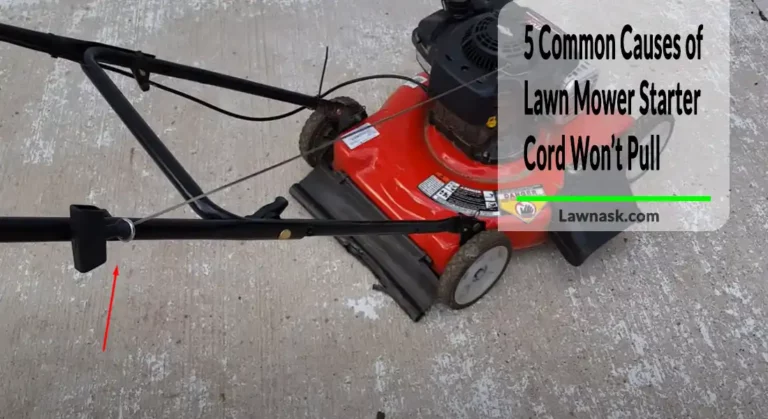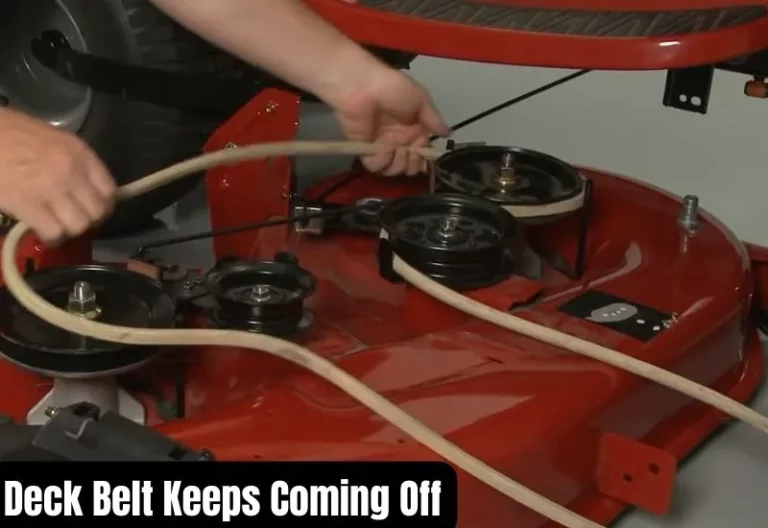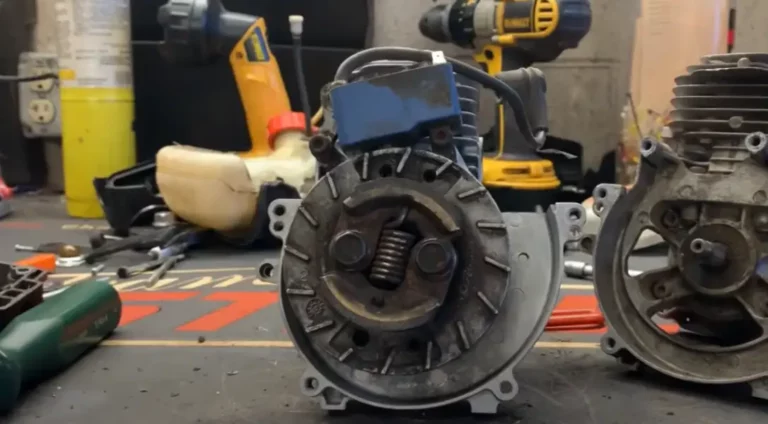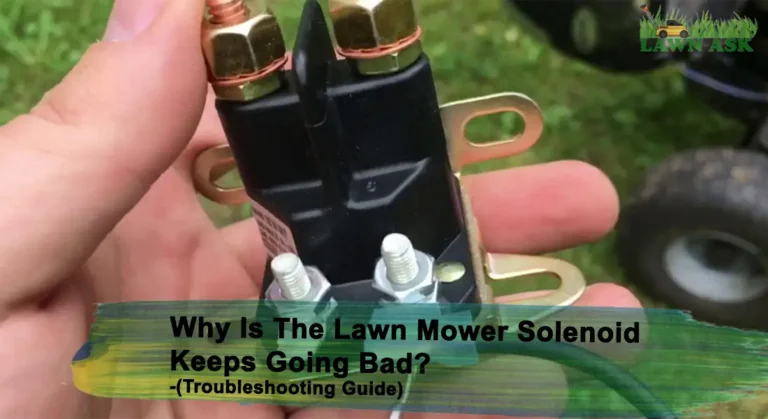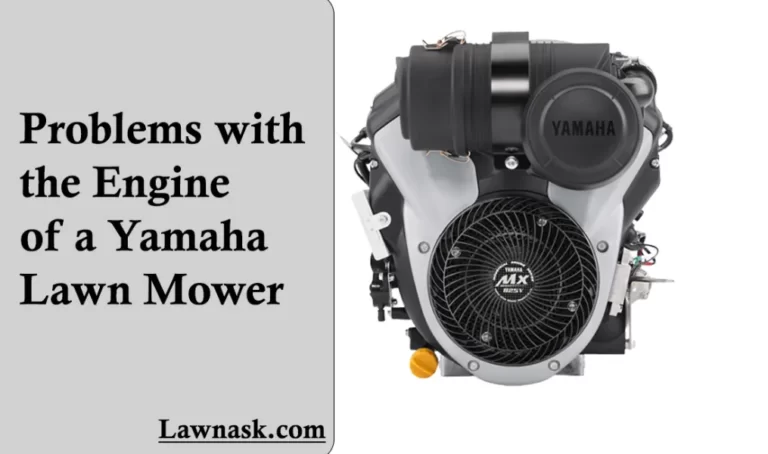Lawn Mower Struggles To Turn Over: 6 Immediate Things To Check
Lawn mowers can occasionally struggle to turn over due to potential issues in the fuel system, filters (air & fuel), or the spark.
If your riding lawn mower struggles to turn over, inspect the current state of the fuel, spark plug, filters, battery, starter, solenoid, and engine blades to either repair or replace the faulty elements.
Fortunately, it’s relatively easy and convenient to resolve when a lawn mower won’t turn over with simple DIY solutions.
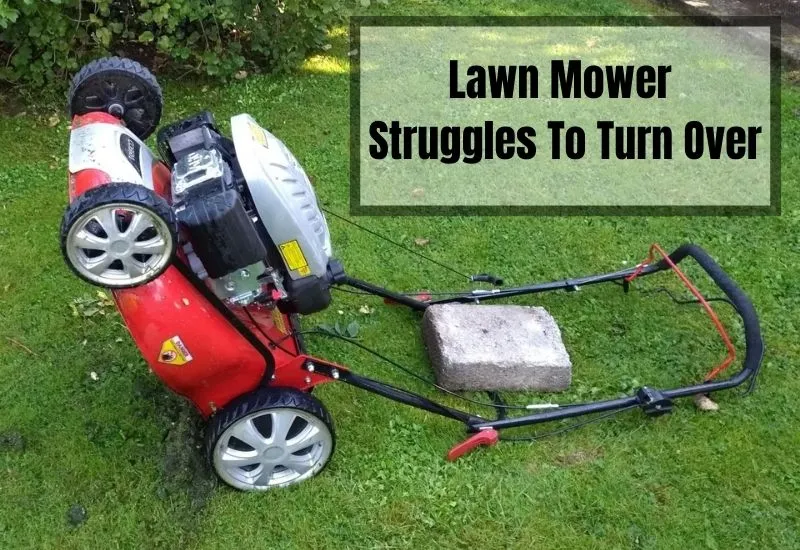
Reasons Why Riding Lawn Mower Struggles to Turn Over
The most common reasons behind turnover failure are:
- Empty Fuel tank/does not have enough Fuel/Bad Fuel/Problem in the Fuel Flow
- Defective Spark Plug & Lead
- Dead Battery or Battery Connection Error
- Clogged/Damaged Air or Fuel Filter
- Faulty Solenoid or Starter
- Seized-up Engine Blades
Check & Fix Your Lawn Mower That Struggles to Turn Over:
Check these top six things before approaching a professional and consulting about your riding lawn mower struggles to turn over.
Checklist of the required tools and materials:
| Tools | Materials |
| Standard Mechanical toolkit | New Spark plug & leads |
| Wrench | |
| Spark plug Gapping tool | Solenoid replacement kit |
| Wire brush | New Starter kit |
| Spark plug cleaner | New Battery & Connectors |
| Spark plug wire tester/Multimeter | |
| Protective Gloves |
1. Bad Fuel or Fuel Flow
The first thing that one should check is the fuel condition of your mower.
If the fuel tank is empty or does not have enough gas, your mower will likely fail or struggle to start over.
You will witness a similar issue if you have not changed the fuel for a while, and it has been sitting for over 30 days.
A Similar issue can arise if fuel could not reach the engine or motor due to any interruption in the fuel flow system.
An unexpected increase in fuel consumption due to leaks in the tank can also lead you to encounter such an issue.
How to Fix
Diagnose whether you have old or bad gas in the fuel tank and replace it with an adequate amount of fresh gasoline.
Look for a leak presence in your fuel tank and fix it accordingly.
If fuel fails to reach your mower engine, tap on the carburetor to clear the flow line.
Inspect whether the carburetor is clogged or severely damaged, and clean or repair the carburetor as needed.
2. Defective Spark Plug & Lead
A broken/damaged spark plug can drive your mower to struggle. Even loose, disconnected, or worn-out spark plug leads can also cause your mower to stumble.
How to Fix
Disconnect the spark plug lead and check the condition.
Clean the surrounding area if needed. Then, locate and remove the spark plug.
Now inspect the spark plug and if it looks darker and dirty, use a wire brush or a spark plug cleaner to clean it.
Note: Never use a shot blaster or abrasive to clean your spark plug.
Be careful not to damage the porcelain insulator around the electrode during cleaning.
Next, use a spark plug gapping tool to check the spark plug gap and if it needs a bit of adjustment, do that.
However, if the condition is too severe, replace the spark plug.
Also, check the spark plug lead with a spark plug tester or multimeter, and if required, replace the spark plug lead.
Related Post: 5 Lawn Mower Bad Spark Plug Symptoms to Look Out For!
3. Battery & Connection Error
A bad/dead battery, corroded battery links, or connections can also lead the mower to experience similar issues.
A similar problem will gradually occur if the battery cables or connector become loose from their connection.
How to Fix
Check whether you have left the key in the “on” position because a fully charged mower battery can discharge within 25 hours if you leave the key in the On (S) position.
Make sure the engagement lever is disengaged. Ensure that the PTO switch is in the off position.
If the lawn mower is still struggling, thoroughly inspect the battery and take necessary action.
If you notice loose or disconnected cable connections, securely tighten them. If the cables have worn out, replace them.
Related Post: Can A Bad Battery Cause A Lawn Mower To Stall? Let’s Explore
4. Clogged/Damaged Air & Fuel Filter
Over time the air and fuel filters can get dirty or clogged due to abuse and excess built-up debris.
Damaged filters can prevent the mower engine from functioning properly. As a consequence, you will eventually witness turning over failure.
How to Fix
The air filter is the plastic or metal part residing near the mower’s engine compartment, but based on model design and brand, air filter location on a riding mower can vary.
So, verify the accurate location with the help of your mower’s user manual.
Based on the severity of the air filter, either clean or replace the air filters.
Similarly, remove the fuel filter to inspect its current state. If the fuel filter looks extremely clogged, or you see stretched/torn holes in the filter, replace the fuel filter.
Note: Fuel filters should be serviced and replaced annually to prevent such commotions.
5. Faulty Solenoid & Starter
Even a defective solenoid and faulty starter can gradually lead you to encounter a similar problem.
Especially when you are sure there’s no issue with the fuel, filters, spark, and battery.
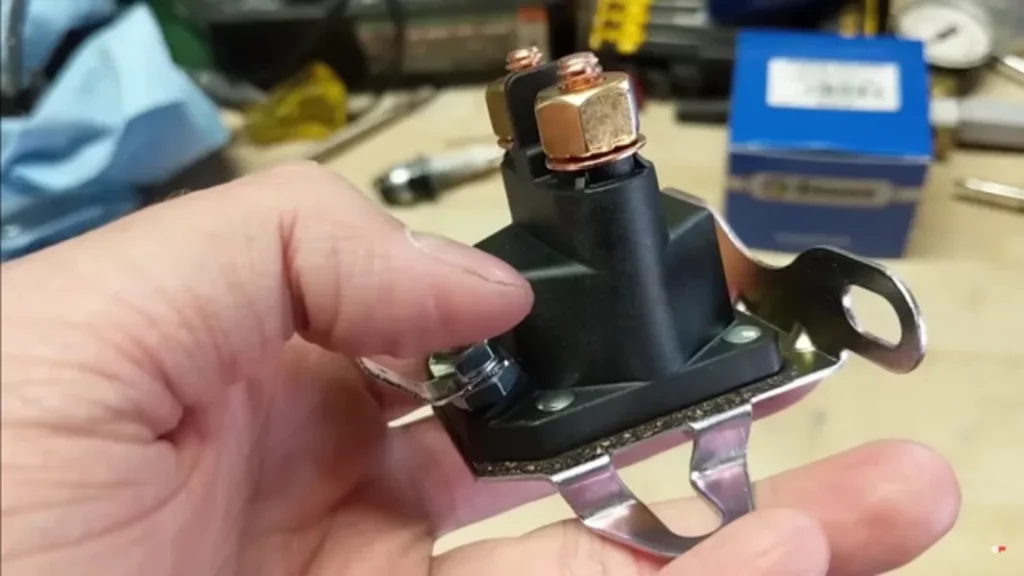
How to Fix
First, take a multimeter to perform a Volt DC test and a Continuity test of the solenoid to find out its current condition.
While testing the existing solenoid, if you can’t hear a click or notice that the solenoid ground looks bad, replace the solenoid.
Likewise, troubleshoot the starter thoroughly and replace it if needed.
6. Seized-up Engine Blades
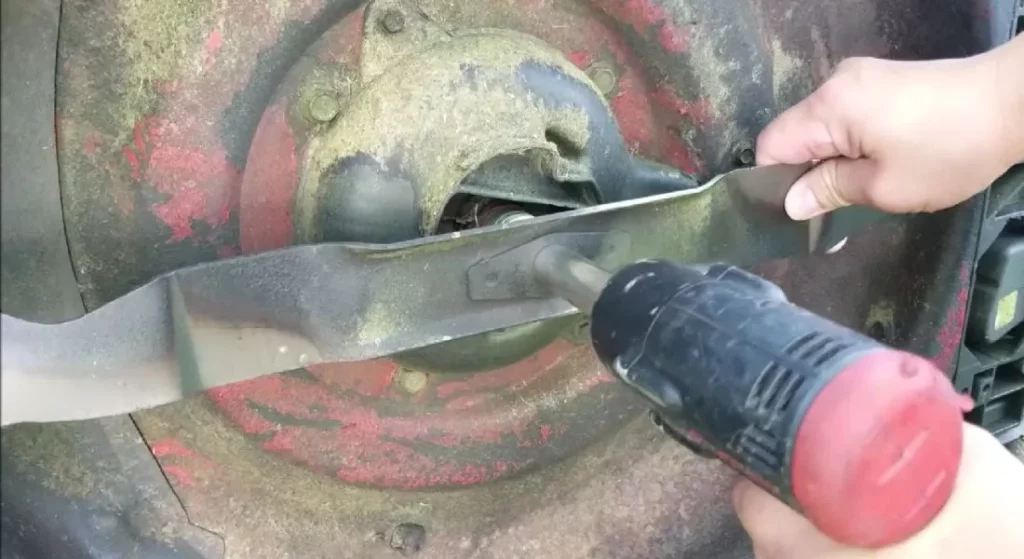
After confirming that all the major parts are in perfect working state, including the battery and starter, if you still notice a struggle during turning over, it means the engine blades are badly seized up.
– How to Unseize Engine Blades
Get access and manually push on it until you are sure that the motor is free and bound up as required.
Remember not to push too firmly or hard. Otherwise, you might break the engine blades since those are plastic.
4 Signs That Your Lawn Mower Needs Professional Care:
In most cases, you can easily fix lawn mower common troubles with DIY techniques, but some issues should be taken care of by Pro_
- Noticing black smoke emissions is a clear sign that indicates that unless you are a pro, you should not rely on DIY hacks.
- Excessive fuel or gas usage even after you have changed the fuel and serviced the spark plug & filters.
- Hearing an unusual knocking sound or noticing visible shaking or vibrating indicates that your mower needs professional help.
Frequently Asked Questions (FAQs)
What causes or drives the lawnmower to start and then die?
A dirty carburetor/clogged carburetor bowl, old/bad fuel, and defective spark plug are the most common reason behind this problem.
How to determine whether the Air Filter needs replacement?
If you have a Paper air filter and the light is obscured with excess dirt or built-up residues, it’s time to replace it. Similarly, visible stains on the Foam Air filter also mean you need to replace it.
What causes your lawn mower not to crank like usual?
The lawn mower fails to crank due to stale gas, malfunctioned ignition switch, a bad/dead battery, or a defective alternator.
Related Posts:
- Causes and Fixes for Engine Failure When PTO Is Engaged
- Troubleshooting Tips for Mower Stalling After Brake Release
- Troubleshooting Tips for a Mower That Turns Over but Won’t Fire Up
- Troubleshooting Tips for Mower Stalling and Failing to Restart
- Troubleshooting Tips for Mower Failure to Turn Over with Spark Plug Installed


